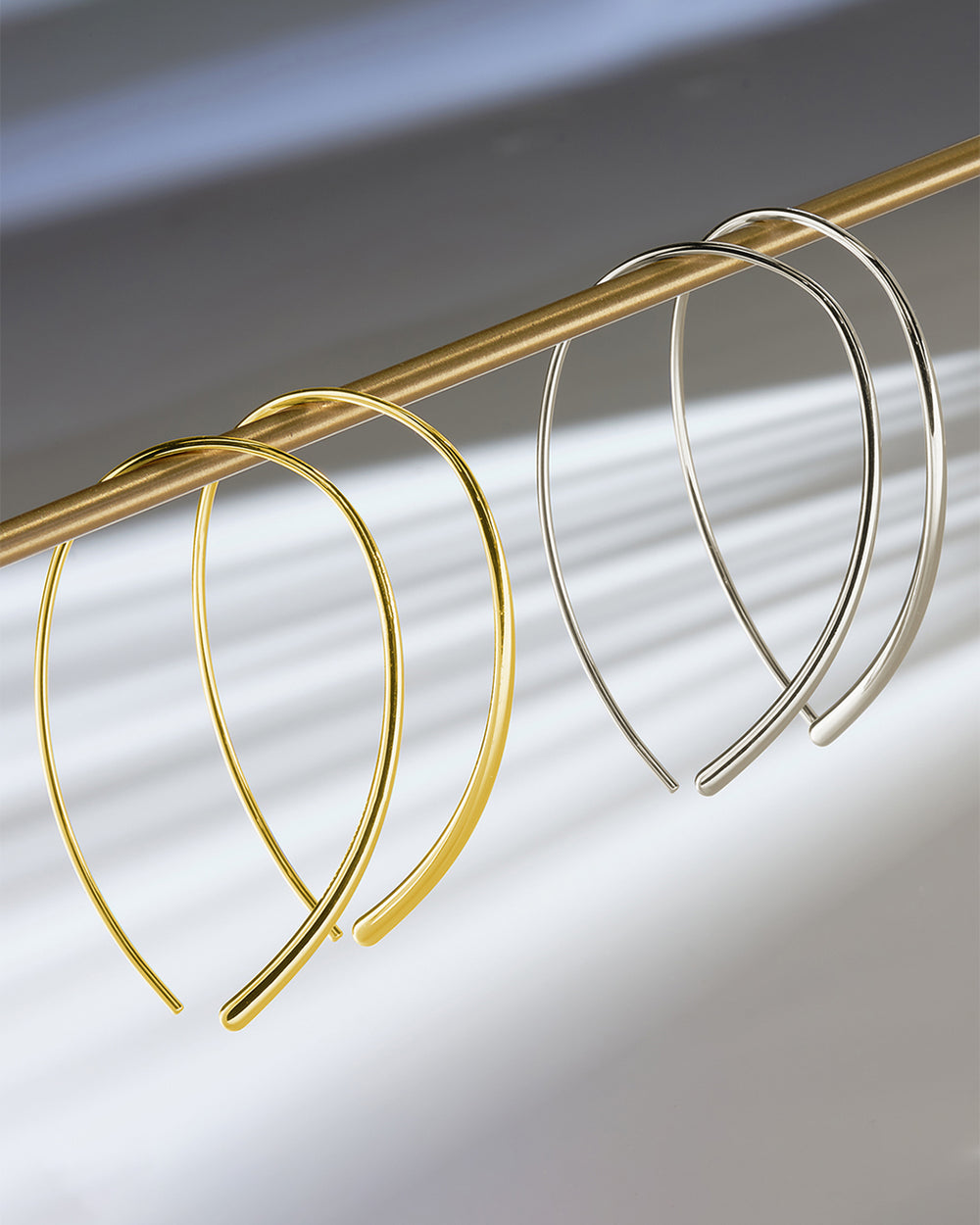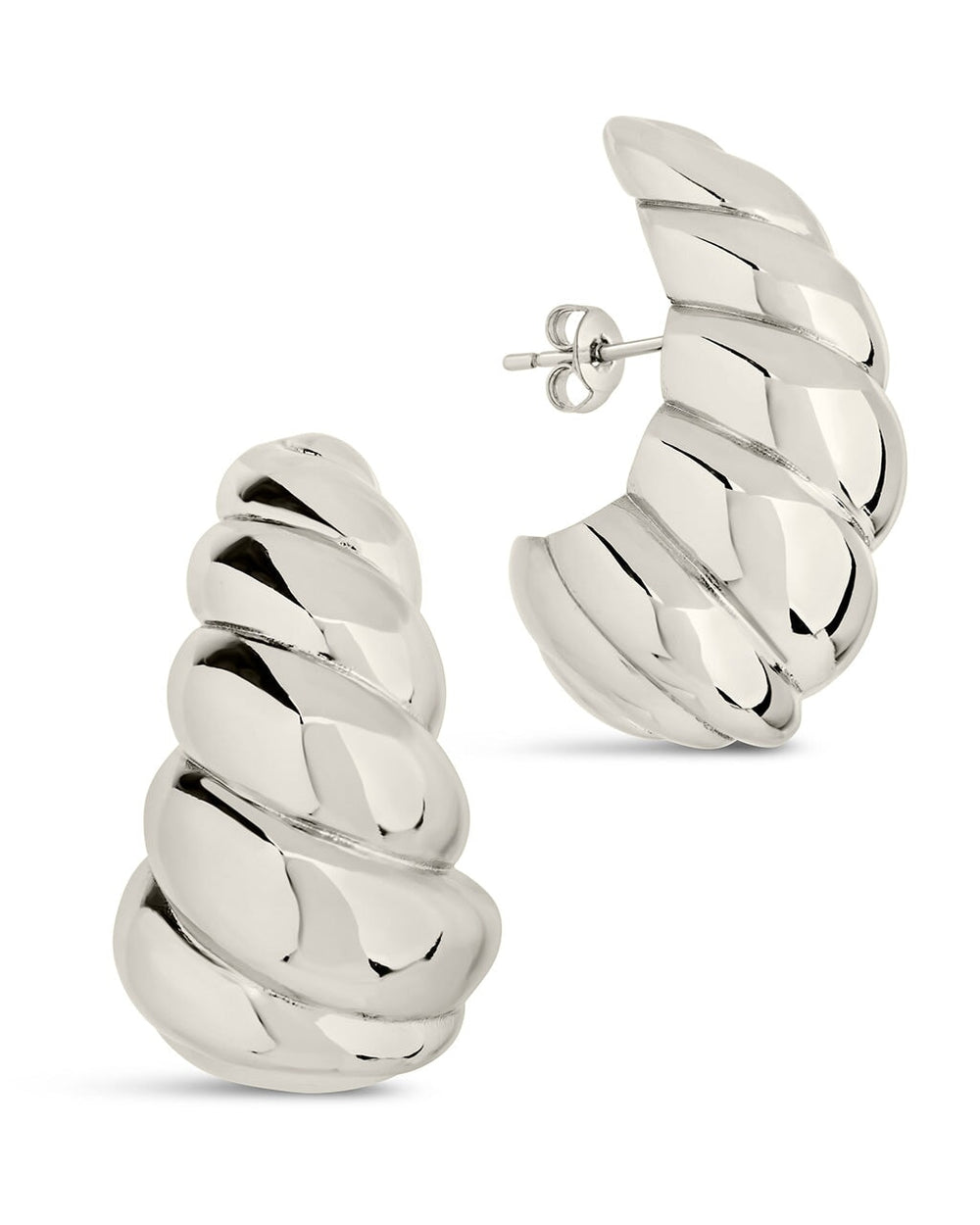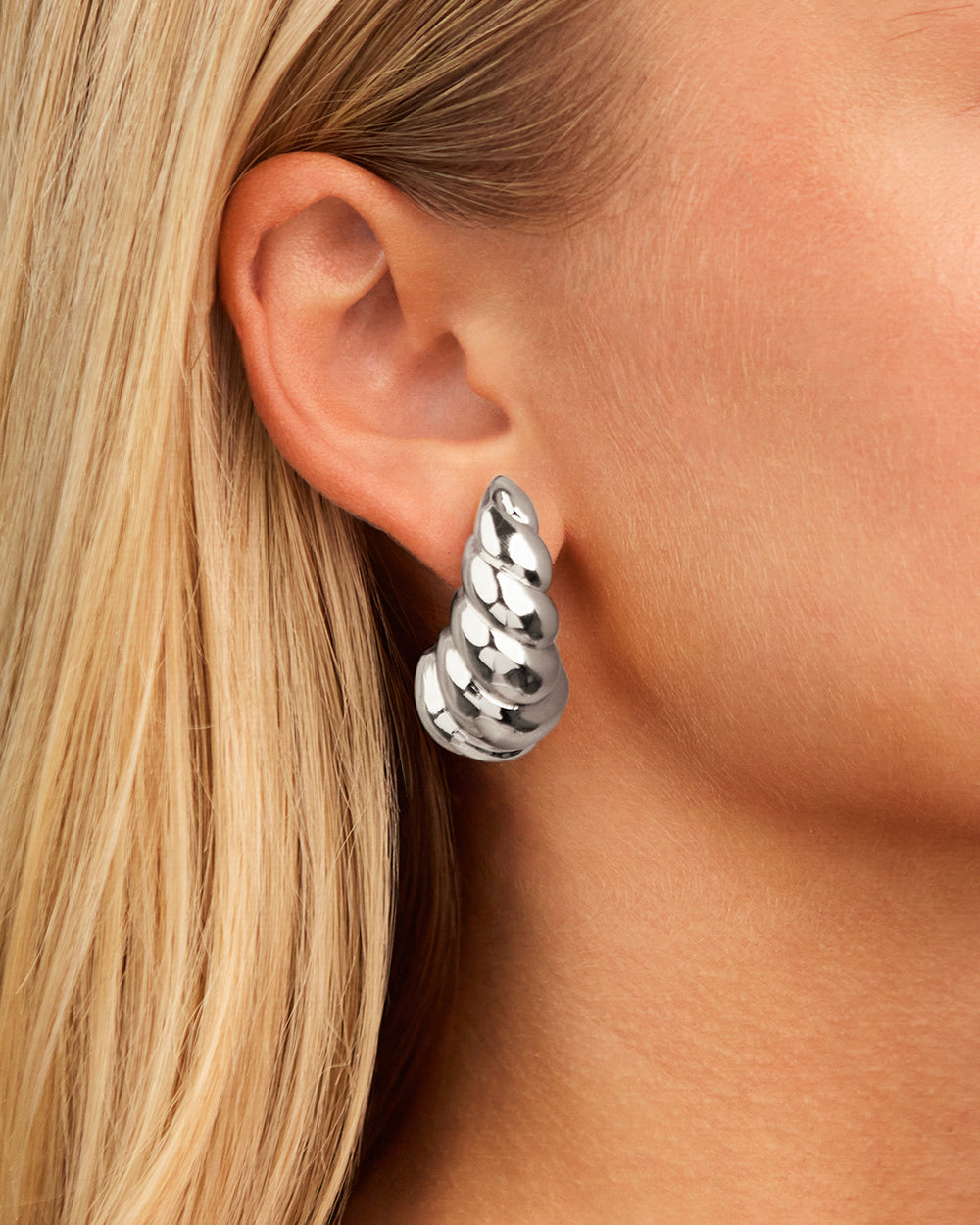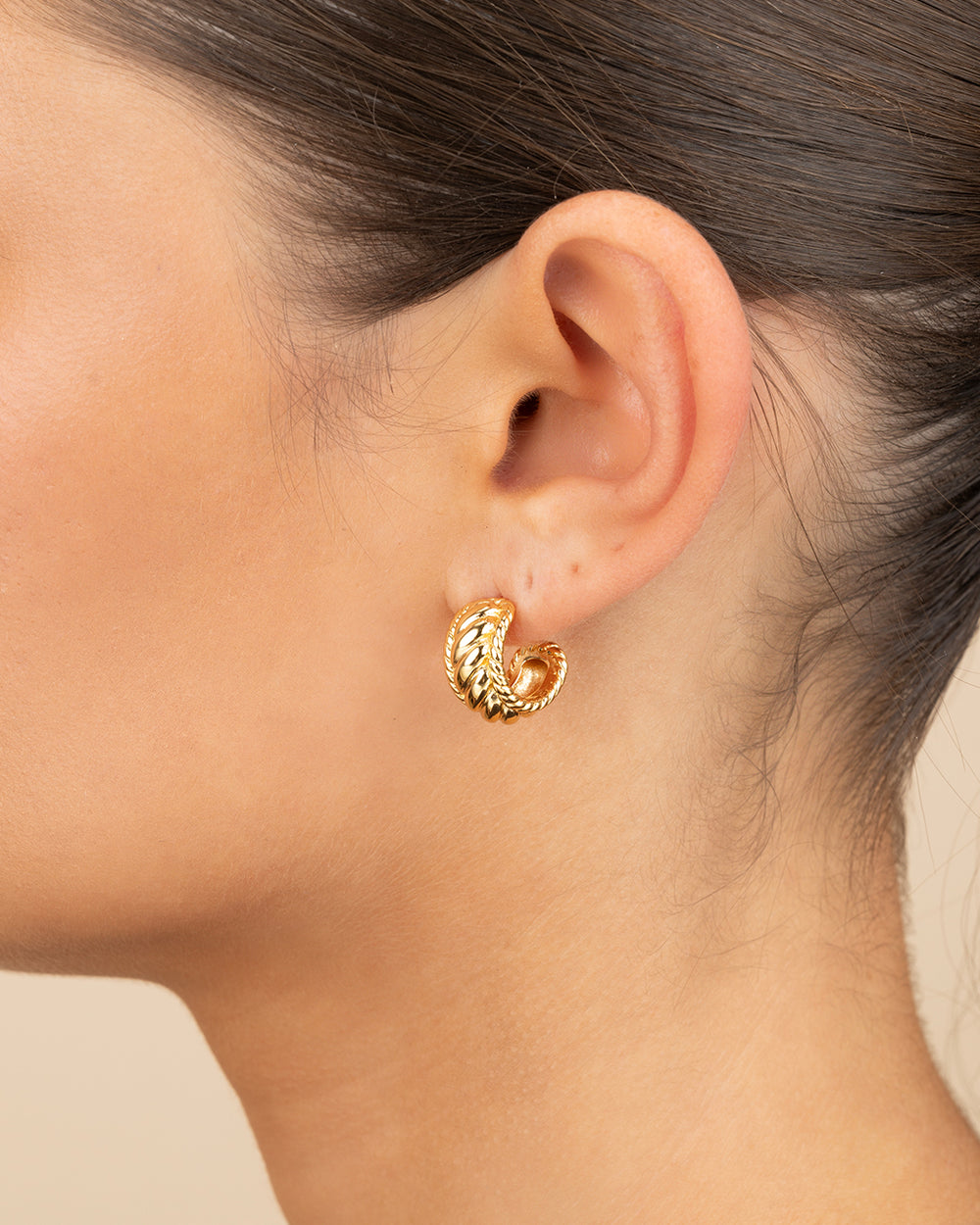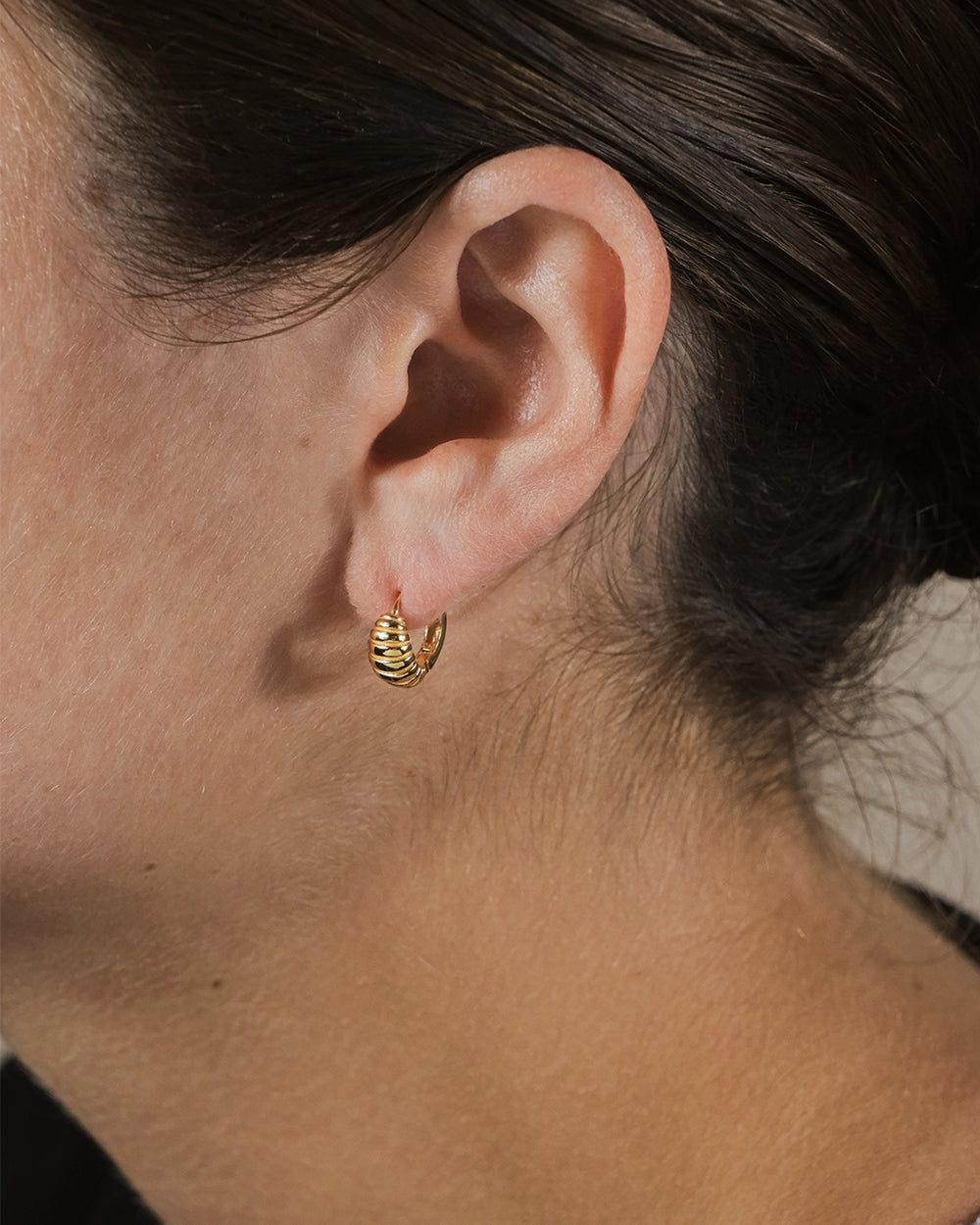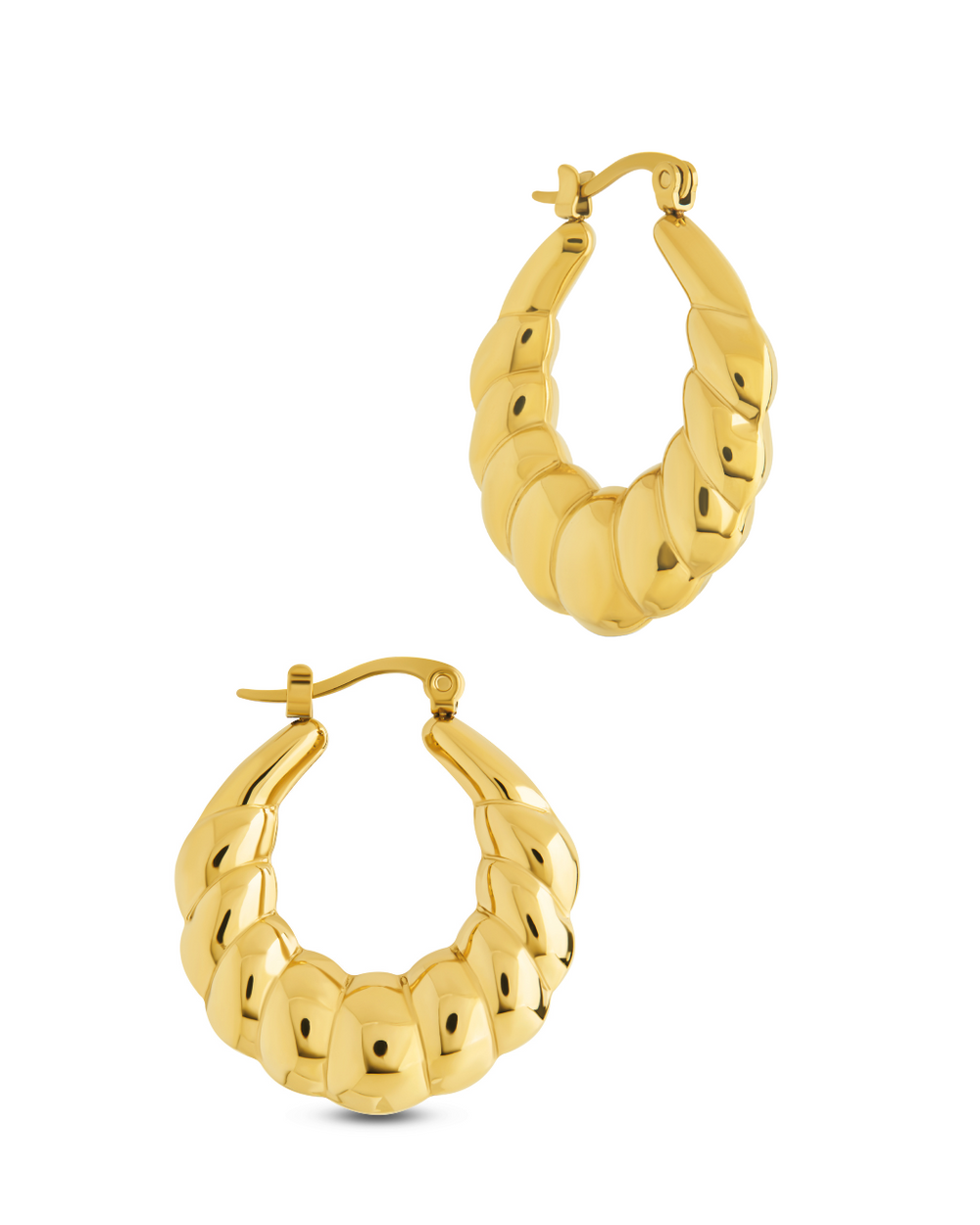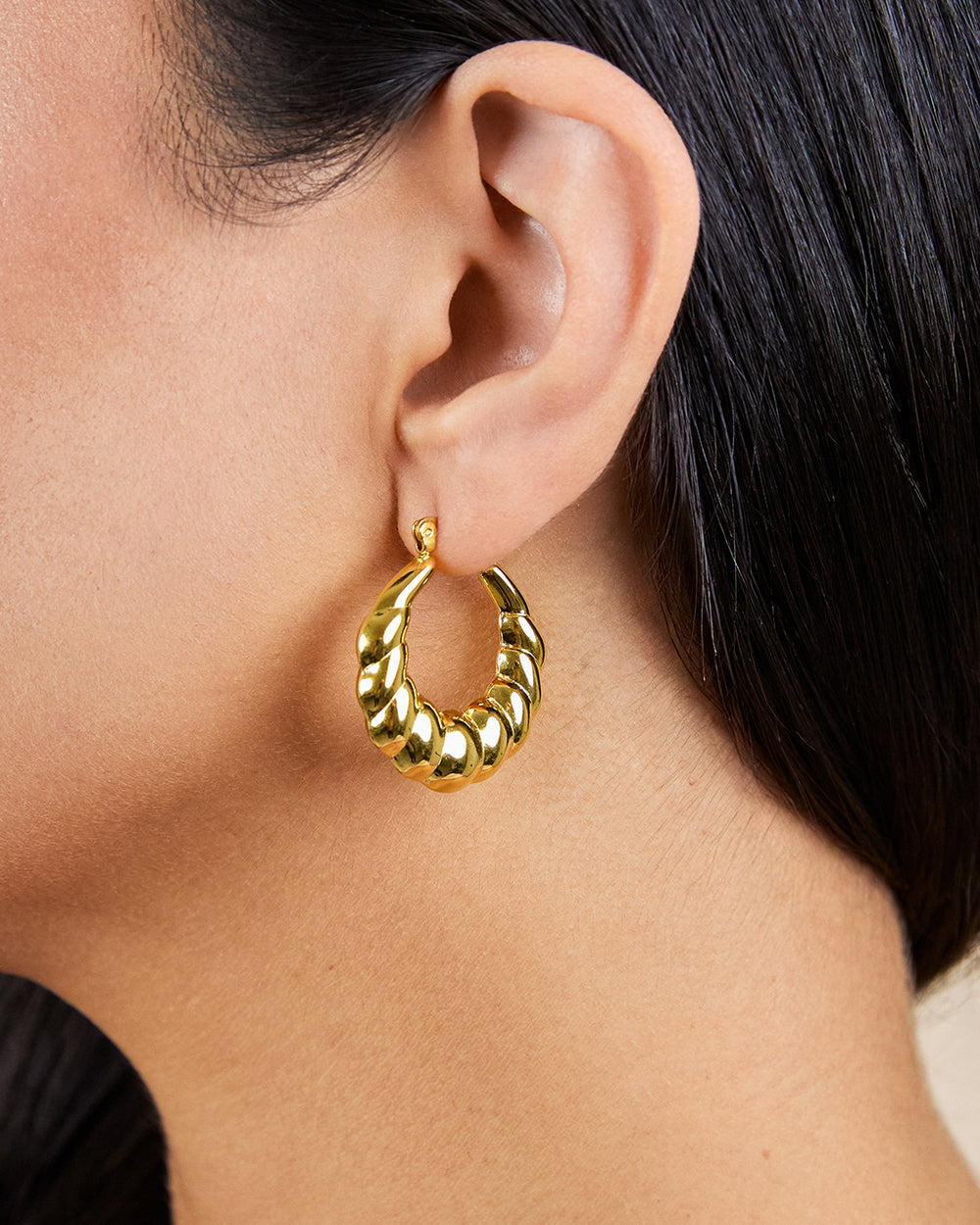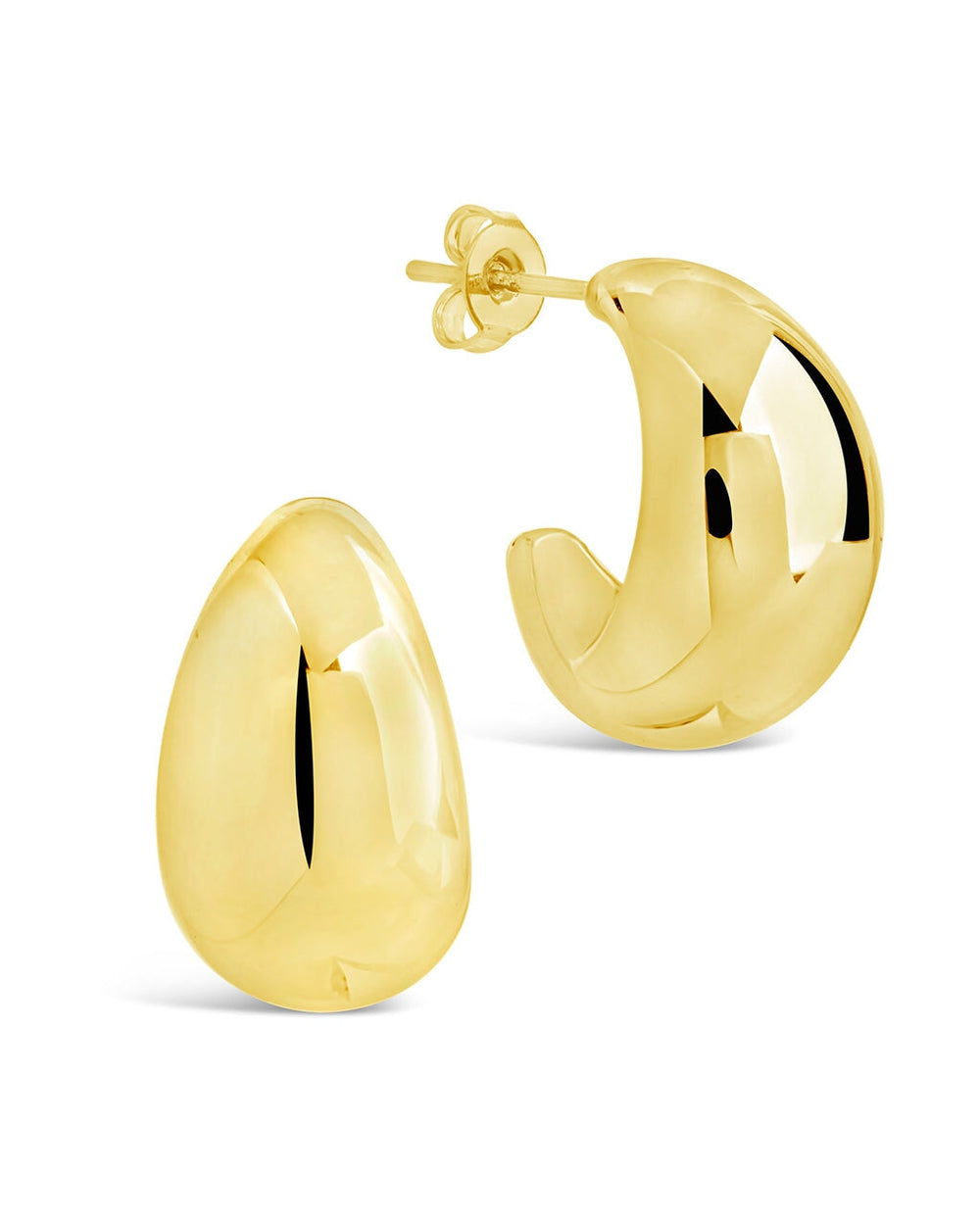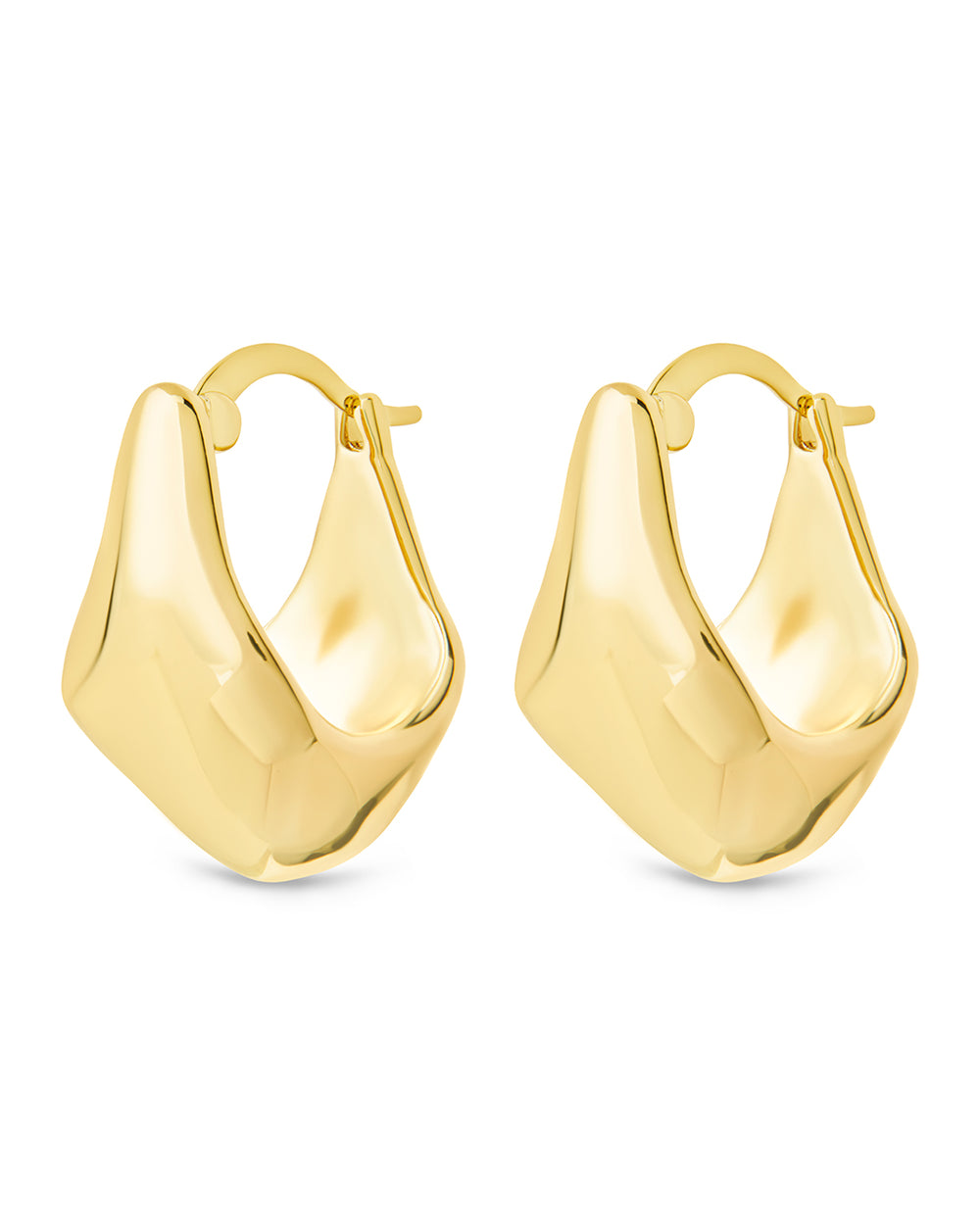Ever wondered why some earrings stay put all day while others seem to disappear into thin air? The secret lies in the earring back. Different types of earring backs offer varying levels of security, comfort, and style – and knowing which one works best for your lifestyle can save you from losing your favorite pair.
Let's break down the most common types of earring backs so you can make informed decisions about your jewelry purchases.
TLDR
- Butterfly backs are the most common and convenient for everyday lightweight studs
-
Screw backs offer maximum security for valuable pieces and active wear
-
Leverbacks work best for drop earrings and provide excellent security with comfort
- Choose based on lifestyle – active people need more secure options, while comfort-seekers might prefer rubber backs
Butterfly Backs (Push Backs): The Classic Choice
Butterfly backs, also called push backs, are the most recognizable earring backs out there. They feature a small metal disc with two "wings" that grip onto the earring post. You'll find these on most stud earrings, and they're popular for good reason.
Pros:
- Easy to put on and take off
- Lightweight and comfortable
- Works with most stud styles
- Affordable to replace
Cons:
- Can loosen over time
- May fall off if not secured properly
- Wings can bend with frequent use
Butterfly backs work best for everyday wear and lighter earrings. They're perfect for stud earrings that you wear regularly but don't need maximum security for.
Screw Backs: Maximum Security
Screw backs are exactly what they sound like – you twist them onto the earring post rather than just pushing them on. These backs create a secure connection that won't accidentally come loose.
Pros:
- Most secure option available
- Great for valuable or sentimental pieces
- Won't fall off during activities
- Long-lasting design
Cons:
- Takes longer to put on and remove
- Can be tricky for people with dexterity issues
- Slightly heavier than other options
Choose screw backs when you're wearing precious earrings or during activities where losing an earring would be devastating. They're ideal for special occasions or when you're traveling.
Leverback and French Wire: Perfect for Drop Earrings

Leverback closures (also called French wires) are commonly found on drop earrings and dangles. They feature a hinged wire that snaps closed behind your ear, creating a secure loop.
Pros:
- Excellent security for hanging earrings
- Comfortable for extended wear
- Won't slip out unexpectedly
- Professional, polished look
Cons:
- Limited to hook-style earrings
- Can be more expensive
- May catch on hair occasionally
These work beautifully with drop earrings and any style where the earring hangs from your ear. The closed loop design means you don't have to worry about them sliding out.
Huggie and Hoop Closures: Built-In Security
Huggie earrings and hoops often come with their own specialized closures. These might include hinged designs, click-in mechanisms, or continuous wire systems.
Pros:
- Seamless, integrated design
- Very secure when properly closed
- Comfortable for sleeping (with smaller huggies)
- Modern, sleek appearance
Cons:
- Closure mechanisms can break
- May require specific technique to open/close
- Replacement can be difficult
The built-in closure system makes these perfect for active lifestyles. You can find beautiful options in Sterling Forever's collection that feature secure, user-friendly closures.
Magnetic Backs: Modern Convenience
Magnetic earring backs use strong magnets to hold your earrings in place. One piece goes in front of your ear, the other behind, and they attract through your earlobe.
Pros:
- No piercing required for some styles
- Easy for people with limited dexterity
- Adjustable pressure
- Good for sensitive ears
Cons:
- Can interfere with medical devices
- May not work with very heavy earrings
- Magnets can lose strength over time
- More expensive than traditional backs
These are great for people who want the look of pierced ears without the commitment, or for those who struggle with traditional earring backs.
Rubber and Plastic Backs: Comfort First
Soft plastic or rubber earring backs provide a gentler alternative to metal options. They're often clear or skin-toned to remain invisible.
Pros:
- Hypoallergenic for sensitive ears
- Comfortable for extended wear
- Won't scratch or irritate
- Affordable and replaceable
Cons:
- Less secure than metal options
- Can degrade over time
- May discolor with age
- Not suitable for heavy earrings
Perfect for people with sensitive ears or metal allergies, these backs prioritize comfort over maximum security.
Choosing the Right Back for Your Lifestyle

Your ideal earring back depends on several factors:
For Daily Wear: Butterfly backs offer the best balance of convenience and security for lightweight studs and everyday pieces.
For Active Lifestyles: Screw backs or leverbacks provide the security you need during workouts, travel, or busy days.
For Sensitive Ears: Rubber or plastic backs reduce irritation, while sterling silver posts and backs (like those from Sterling Forever) are naturally hypoallergenic.
For Special Occasions: Screw backs ensure your statement pieces stay put during important events.
For Heavy Earrings: Leverbacks or specialized hoop closures distribute weight better and provide adequate support.
Sterling Silver Quality Makes a Difference
The material of your earring backs matters just as much as the style. Sterling silver backs resist tarnishing and won't irritate sensitive ears like cheaper metals might. Sterling Forever's pieces come with high-quality backs that match the durability of their posts – and if anything does go wrong, their lifetime guarantee has you covered.
Whether you're browsing delicate earrings for everyday wear or chunky earrings for making a statement, paying attention to the backing system will help you choose pieces that work with your lifestyle.
The Bottom Line
The right earring back can make or break your jewelry experience. While butterfly backs work great for most situations, don't be afraid to invest in screw backs for your favorite pieces or leverbacks for your go-to drop earrings. Your ears (and your peace of mind) will thank you.
Remember, losing an earring is frustrating, but with the right backing system, it's completely preventable. Choose based on your activity level, the weight of your earrings, and how secure you need to feel throughout your day.
Frequently Asked Questions
1. What are the most common types of earring backs available?
The most common types of earring backs include butterfly backs (also called push backs), screw backs, leverbacks, omega backs, and magnetic backs. Each type offers different levels of security and comfort. Butterfly backs are the most popular for stud earrings, while leverbacks work best for dangle earrings. For those with sensitive ears, rubber earring backs provide a comfortable alternative to metal options.
2. How do I choose the best earring style for my earring collection?
When building your earring collection, consider your lifestyle and comfort needs. For everyday wear, lightweight stud earrings with secure earring backs work perfectly. If you love heavy and large earrings, look for pieces with latch backs or lever backs that provide better support. For those with pierced ears who want versatility, having a mix of small studs, drop earrings, and hoop earrings gives you options for any occasion.
3. What makes flat back earrings different from traditional backs?
Flat back earrings feature a smooth, disc-shaped backing that sits flush against your ear, unlike traditional backs that may have textured or curved surfaces. These flat backs are particularly comfortable for all day wear and sleeping. They work well with threaded posts and provide a secure closure without the bulk of butterfly backed earrings. Many people prefer flat backs for their streamlined profile and comfort.
4. Are there hypoallergenic options for people with skin sensitivity?
Yes, there are many hypoallergenic materials available for those with skin sensitivity. Sterling silver and surgical stainless steel are excellent nickel free options that won't cause irritation. For the backing itself, rubber or silicone backs are gentle alternatives. When shopping, look for hypoallergenic options in your jewelry box essentials, especially if you plan on daily wear of your valuable earrings.
5. What's the difference between french clips and clip on earrings?
French clips are a specific type of closure mechanism that features a hinged design with a secure hold, typically used on more expensive pieces for their polished look. Clip ons, on the other hand, are designed for people without ear piercing and use pressure or springs to stay in place. Both offer practical choice solutions - french clips for pierced ears wanting security, and clip ons for those who go to non-pierced options.
6. How do I ensure my earrings secure properly for active lifestyles?
For added security during active wear, choose earring backs that won't easily come loose. Screw-on backs twist into place and provide the most reliable hold, while la pousette backs (a type of friction backs) and latch backs also offer excellent security. Monster backs are oversized butterfly backs that grip more surface area of the earring post. For heavy earrings, omega backs with their curved wire design distribute weight evenly. These popular styles among many shoppers ensure your right earring (and left!) stay put during any activity, and small hoops with secure closures are perfect for those who wear earrings while being active.


